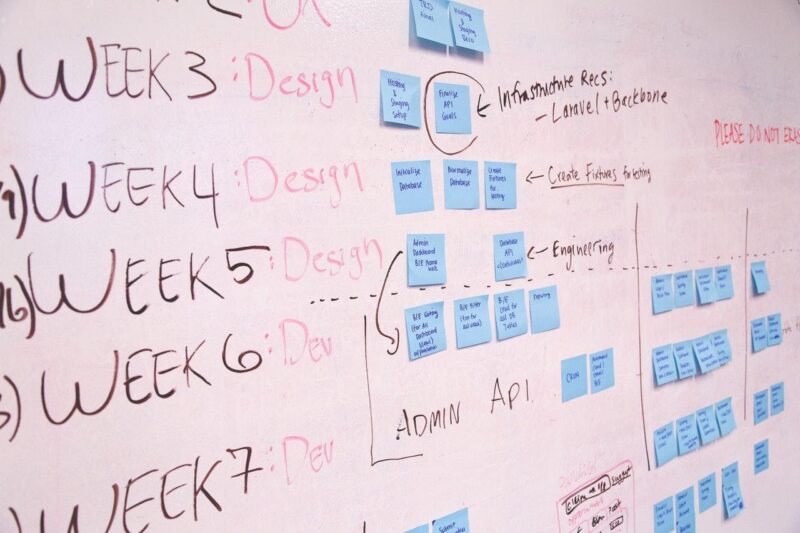Although 2024 sounds like the perfect year to launch a new digital product, the market remains quite volatile, and customer behavior unpredictable. The competition will continue to be a problem, and you still need to be very careful when planning your entry strategy because the statistics don’t really paint a pretty picture. According to one study from Harvard Business School, 95% of all new product launches fail, and data from the Marketing Research Association says that only 60% of new launched end up generating revenue.
So, even though we’re in the midst of digital transformation and users are more open than ever to trying new digital solutions, success is in no way guaranteed. For your launch to generate hype and profit, you have to plan every move carefully and create a detailed launch timeline. Lack of preparation remains the biggest challenge in achieving launch goals, according to HBR.
So, if you already have an innovative digital product and you’re working on those last finishing touches, here are a few tips that will help you make sure it sticks the landing.
Create hype with a mystery “coming soon” page

The mystery is one of the most effective modern marketing practices and the best time to use it to your advantage is before a new product launch. The human mind is fascinated with the unknown. The mystery is what creates an exciting story, keeps you engaged, and stays in your memory. In a world where 30,000 new products are launched every day, a bit of mystery helps you stand out from the crowd and keep your audience interested. So, instead of announcing the new product directly on your website, you might want to create a mysterious “coming soon” page with a countdown timer. This will make visitors curious and generate more hype so that more people will be visiting your website on the day of the launch.
Testing is everything
A new product launch should never be scheduled unless you’ve thoroughly tested the product first. We can’t overemphasize how important testing is and how much it can streamline your launch. No matter what digital product you’re making, testing will ensure that all features work exactly as intended and users get the experience they paid for. Unfortunately, there are countless cases of promising products that failed simply because their makers didn’t bother with testing until the last minute and delivered faulty versions of the product.
You only get one chance at a first impression, so don’t neglect this important step. Although the timeframe can vary depending on the product’s complexity, ideally, you should start testing a couple of months prior to the estimated release date. This way, the developers will have time to make major changes. And another thing: testing should be left to a dedicated team, not the same team who oversaw development. According to the experts at Pixetic, developers already know how the product works, and biases could come into play. On the other hand, testers have a fresh perspective and might raise issues you haven’t thought of.
Find the perfect timing

Generally speaking, when a product works as intended, that’s the best moment to launch it. You can always make slight tweaks or add new features in future versions. However, there are cases when it’s better to delay the launch, at least by a few days. For example, long weekends and public holidays can be tricky because customers spend a lot more money around that time, and your launch can be eclipsed by the retail rush. As for which day of the week is best, the consensus is that Monday is the most hectic day of the week, and should be avoided and that at the weekend clients are too busy with other activities to pay attention to new products. Tuesday, Wednesday, and Thursday are usually the best days to announce a product launch. Apart from these general guidelines, you should also consider the regional variations that are specific to your niche. For example, software designed to help students with their assignments should ideally be launched before the start of the school year.
Use special launch pricing to bring in more users
Full price at launch? That might set some people off. Instead, tempt potential clients with special launch prices and limited-time offers. For example, you can give them 25% off if they preorder, discounts that are only valid in the week of the launch, or extended free trial periods. In 2024, evaluating your pricing is very important because customers are already facing financial difficulties, and they’re less likely to invest in non-essential products.
Don’t neglect outreach

As the launch day approaches, you probably have a blog post draft scheduled for your website and a few social media posts lined up. These are all good, but, to thoroughly promote your new product, you also need to invest in media outreach. Collaborating with bloggers, niche publications, and large media outlets will increase brand awareness and exposure.
Find your brand ambassadors
Influencer marketing is one of the fastest-growing marketing sub-sectors, and its value is on track to exceed a whopping $15 billion by 2024. Influencers in your niche who have a considerable following make perfect brand ambassadors because they boost trust in your products, increase awareness, and make people curious to try them. Instagram is the gold standard for Influencer marketing, but don’t worry if it doesn’t match your target audience. You can also achieve excellent results on Facebook, YouTube, Twitter, and LinkedIn.
Continue to engage with users after launch

No matter if the launch met your expectations or not, you shouldn’t stop communicating with your audience after only a couple of weeks. According to Catalina’s research, only 11% of new product users are still engaged after 52 weeks, which is a big mistake coming from the company. First of all, you need to continue to stay engaged in order to get feedback: how was the product received? Did users have a seamless experience? And secondly, you have to be patient. It typically takes around 28 weeks for a new product to reach maximum distribution, and clients need different periods to try the product. For example, 65% of the clients who try a product as soon as it comes out are men, while women are more likely to try a product after it’s been on the market for a while.


